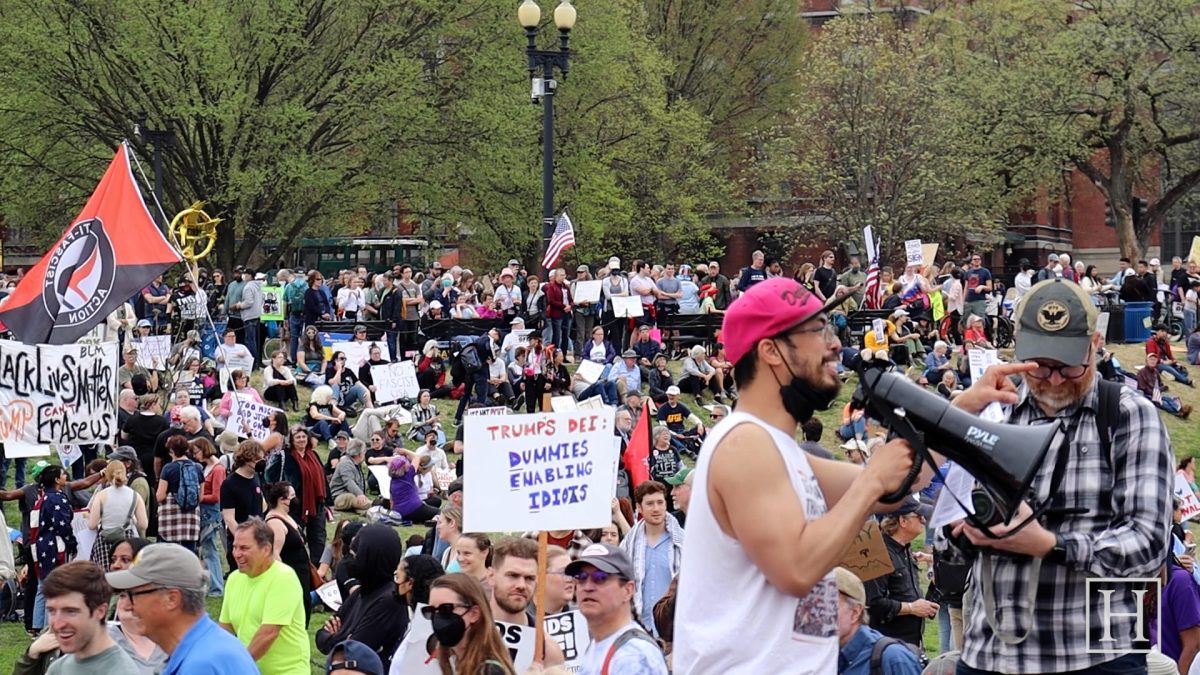On the same street where today’s soldiers nurse their battle wounds in Northwest Washington, a series of simple white stones stand guard over the ghosts of the soldiers from another era.
Just blocks away from Walter Reed Army Medical Center in D.C., and only about five miles away from GW’s campus, lies Fort Stevens from the Civil War, where some 40 soldiers during the mid-nineteenth century died defending the nation’s capital in one of the war’s last battles.
The passage of time and urban sprawl has taken its toll on Fort Stevens. While the reconstructed remains of the fort now stand guard over quaint suburban homes and a nearby school, it once served as the last line of defense for the nation’s capital.
In 1864, as the Confederacy suffocated under the stranglehold of the Union army’s noose around the Southern capital of Richmond, General Robert E. Lee and Confederate President Jefferson Davis made the desperate decision to send 20,000 troops up through the Shenandoah Valley to the gates of Washington, D.C. under the command of Virginian Jubal A. Early.
As Early marched north, the South was desperate. Most of the once-proud Confederate countryside lay in ruins, and the remnants of Lee’s once-mighty Army of Northern Virginia dug in at the Richmond suburb of Petersburg, the key to Richmond’s defense.
“In sending General Early, Jeff Davis and General Lee had three goals. One, pull Union troops out of the (Shenandoah) Valley and two, move towards Baltimore to get Confederate POWs released so they could get back south to fight for Dixie and finally, to strike fear in the heart of the nation’s capital,” said Ron Harvey Jr., a park ranger with the interpretation division of the National Parks Service.
Early wanted to find Washington weak and defenseless. In July of 1864, only 9,000 soldiers were assigned to defend the nation’s capital as compared to 23,000 the previous year, according to the National Park Services Web site.
After scoring a string of victories over Union troops in Maryland, General Early set his sights on Washington and led his soldiers down the 7th Street Pike (now Georgia Avenue) where he met Union forces at Fort Stevens.
While Early’s rapid approach left the U.S. War Department in a state of shock, General Ulysses S. Grant, commander of the Union troops, managed to order reinforcements to the fort.
With President Lincoln locked in a fierce reelection battle against Democrat and former general George McClellan, who promised negotiations with the South, the stakes could not have been higher for Lincoln or the Union cause.
“In July 1864, elections are coming. If the Confederates can make Lincoln run, it will be a sign of weakness. A defeat would have been a demoralizing blow,” Harvey said. “At this point, everyone is tired of the war. There are many people in the North trying to arrange a peace deal with the South.”
Fully aware of the tenuous political situation in the Union, the Southerners began their assault on Fort Stevens. In an effort to show both his political strength and command of the situation, Lincoln and his wife personally visited Fort Stevens while the battle raged.
A small stone monument now commemorates the spot on the parapet where Lincoln stood as Confederate troops shelled the Fort, making the battle for Fort Stevens the only time a sitting American President has come under fire on a battlefield.
By nightfall, Union soldiers sent Confederate troops into full retreat, securing the safety of the nation’s capital.
Within a year, the defensive bulwark at Petersburg collapsed under pressure from General Grant’s army, and the Union troops marched victoriously into Richmond as the city burned.
General Lee ended the conflict days later with his surrender of the Army of Northern Virginia, effectively ending a war that, according to the Department of Veteran Affairs, claimed more American lives than any other war.
While high school history books seem to forget Fort Stevens, the fort stopped what would have been a “demoralizing blow,” Harvey said.
“The Battle for Fort Stevens is the great ‘what if?'” the park ranger said. “What if the South had won? They could have easily turned the cannons around and shelled the White House.”
Citing the importance of Lincoln’s presence on the battlefield, Harvey asked, “What would have happened if Lincoln was killed during the battle. Would Lincoln still be considered a great president?”
According to Harvey, who has devoted much of his career to the history and preservation of Fort Stevens and the nearby military cemetery, Fort Stevens was a “vital part” of the last stage of the war.
“Look at the people involved in this battle. College students were left defending the nation’s capital against one of the most heralded Confederate armies,” Harvey said.
So, while images of Gettysburg and Gone With the Wind are often the most common images associated with the Civil War, Harvey contends that as the only Civil War battle to take place within the District of Columbia, the battle for Fort Stevens deserves more recognition.
Said Harvey: “This little battle culminates it all.”




